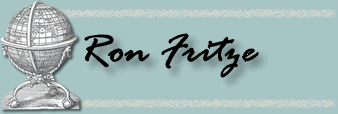
|
Chapter 2"Living in the Land of War"Describe Al Wazzan's capture and imprisonment by Christians? How did the Popes use the services of Leo Africanus and why? Who did Al Wazzan associate with during the time that he lived in Italy and why? What types of scholarly activity did he engage in during his years in Italy? T E R M S
Chapter 3"Writing in Italy"What were the five books that Yuhanna al Asad wrote while he was living in Italy? Discuss the manuscripts of Yuhanna al Asad's Description of Africa, how were they produced, and how Ramusio edited them for publication as a printed book. Discuss the Arabic and Islamic traditions of geographical and historical writing and how they influenced Yuhanna al Asad in writing his Description? Who were his intend audience or readers? T E R M S
Chapter 4"Between Africa and Europe"What does Davis mean by Yuhanna al Asad's "double vision" in his writings? What clues does he provide us that reveals his "double vision"? How does Yuhanna al Asad use the technique of "ruse" in his writings and how do other writers cited by Davis use it? How does Yuhanna al Asad deal with making comparisons between Italy and North Africa in his writings, including the printing press? T E R M S
Chapter 5"Conceiving Africa"What were the differences between European and Islamic geographical concepts? How did Yuhanna al Asad deal with them in his Description? How does Yuhanna al Asad describe and classify the peoples of Africa? How objective were his evaluations? What was the role of race and religion in Yuhanna al Asad and other Islamic writers' discussions of African peoples? T E R M
Chapter 6"Between Islam and Christianity"How did Yuhanna al Asad deal with religion in his Description? How did his European editors change his comments about religion? What were Yuhanna al Asad's views on religious toleration and religious fanaticism? How did Yuhanna al Asad view the existence of sects and divisions within Islam? What were Yuhanna al Asad's attitudes toward jihad? What is Natalie Zemon Davis's assessment of the sincerity of Yuhanna al Asad's conversion to Christianity? T E R M S
Chapter 7"Curiosity and Connections"How does Yuhanna al Asad describe women and sexual matters in his Description? What does Natalie Zemon Davis speculate about Yuhanna al Asad's life in Rome concerning women and sexual matters? Chapter 8"Translation, Transmission, Distance"Davis agues that Yuhanna al Asad used translation and interpretation work to help him maintain his state of being a man between the two worlds of Islam and Christianity. What is her evidence for this contention? Chapter 9"The Return"How did Yuhanna al Asad manage to escape from Italy? What happened to him after he returned to North Africa? What was Yuhanna al Asad's legacy as a scholar? Epilogue"Affinities"Davis sees Al Wazzan and Rabelais as similar figures. What traits did the two men share and in what ways were they different? 
Christopher Columbus and the Age of Discovery
is an internet learning resource directed by Dr. Ronald Fritze, Dean of the College of Arts and Sciences at Athens State University in Athens, Alabama. CornDancer is the personal website of Dr. Freddie A. Bowles and Ebenezer Baldwin Bowles. CornDancer has participated in the World Wide Web since 2000. Submissions are invited. Contact webmaster at threadspinner@corndancer.com |
||||||||||||||||||||||||||||||||||||||||||||||||||||||||||||||||||||||||||

